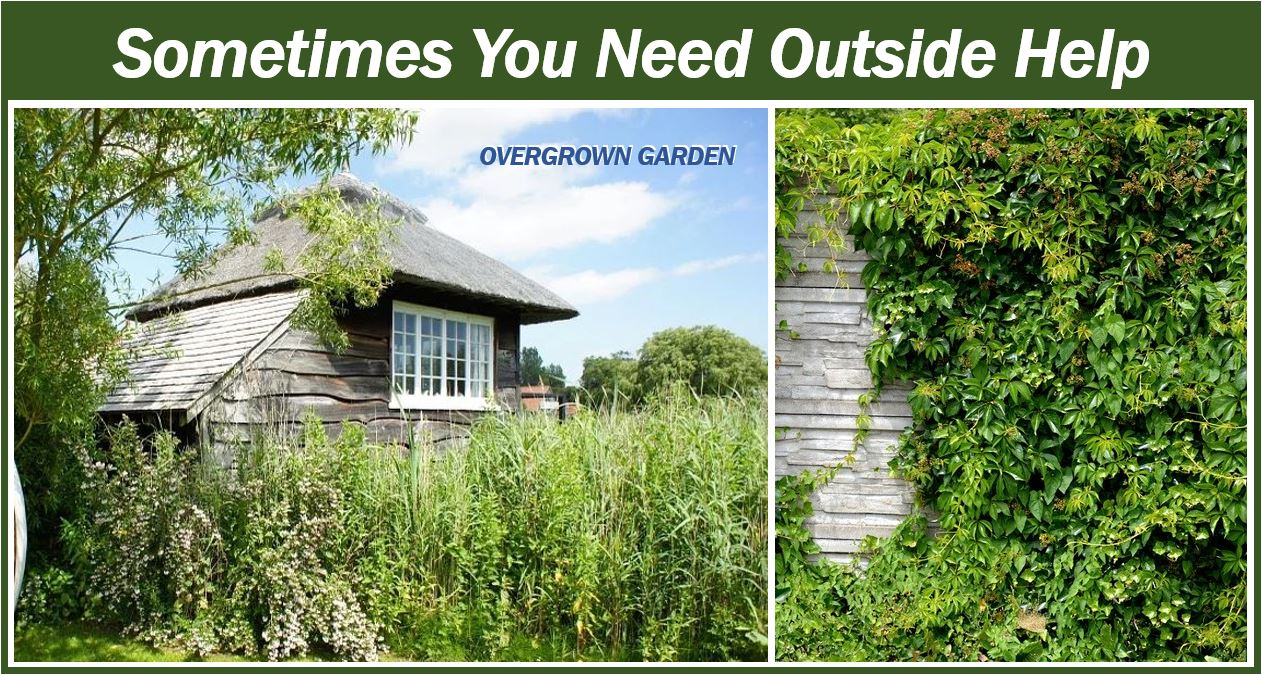Time is a funny thing. We always want more of it and sometimes moan when we have wasted or lost it. However, there is also the state of having too much of it. The passage of time can lead to some very interesting outcomes; both desirable and undesirable ones.

If you are set on addressing the problem yourself, there are some approaches you can adopt that will help you complete the whole project successfully.
Here are some helpful tips:
Get Rid of All the Unwanted Plants
First things first, you have to remove all the plants that you do not want to keep. If your garden has thrived on total neglect for a long time, it will be overrun with all kinds of shrubs, weeds, and flowering plants. By the end of the summer, especially if there has been plenty of rain, you will probably not be able to walk from one end of the garden to the other without a machete.
Initially, you need to focus on the plants you either don’t want or that you believe could harm the ones you like. Move slowly and work carefully. Just dig out, pull out, or cut off any plants that are stifling your garden.
Divide Perennials
Having perennials in your garden can be both a curse and a blessing. These types of plants may grow to such an extent that they take over every inch of the whole area. However, they can be a necessary and useful force to have. Every garden consists of both good and bad perennials … sort of. The first step, therefore, is to identify which ones are good, and keep them, and get rid of the others.
Perennials can serve as ornamental plants as well. So, you can replant some of them in jars or pots. You can even take some of them out and leave them in a pot for the time being, until you have rejuvenated your garden, and then plant them back. Sorting out the perennials can take a long time, but it must be done if you are serious about reclaiming your garden.
Pruning
The pruning process is also called the rejuvenating process. It is something that will breathe new life into your garden and allow it to flourish once again, as it once did. Prune the plants that you want to keep. If you don’t, they will grow and grow until the whole area is an unsightly mess.
You will have to prune all the plants that have grown out. This includes both flowers and especially bushes, which can double in size over a relatively short time. Don’t worry about overcutting – it happens and is not usually too harmful. In most cases, if you overcut, the plant will simply take a bit longer to grow back.
All serious and dedicated gardeners know that pruning is a chore that must be done repeatedly. It serves two purposes:
- It makes your garden look nice.
- In many cases, it is necessary for the health of the plant.
Weed control
The term weed is a subjective one. It refers to a plant that we don’t like in a specific place, i.e., a plant in the wrong place. Weeds exist for gardeners but not botanists. As far as botanists are concerned, what we call weeds are plants just like all others.
Any garden that is left unattended will soon have weeds. They are the biggest enemy of every good looking garden and may be the part of your recovery effort that takes the longest and consumes most of your energy.
Regular weeding will make sure they are kept under control. If your garden is excessively overgrown, you may have to bring out some heavy guns. Weedkillers, which we also call herbicides, are chemicals that we use to control or get rid of the plants we don’t want. There are many different types, depending on which kind of weed you are targeting. In other words, weedkillers are selective.
When applying a herbicide, make sure you only spray onto the weeds. They might kill off the plants you like if you are not careful.
Solarization is another approach you can use. It is a more environmentally friendly way than herbicides to control weeds and other pests. It involves hoeing the plants under the soil and covering them with a tarp, i.e., a tarpaulin cover. Solarization takes significantly longer to do the job than a weedkiller. However, if keeping your garden free of nasty chemicals is important, it is your best option. While herbicides are effective in a matter of days, solarization can take quite a few weeks.
Interesting related article: “How gardening can improve your overall health.“
